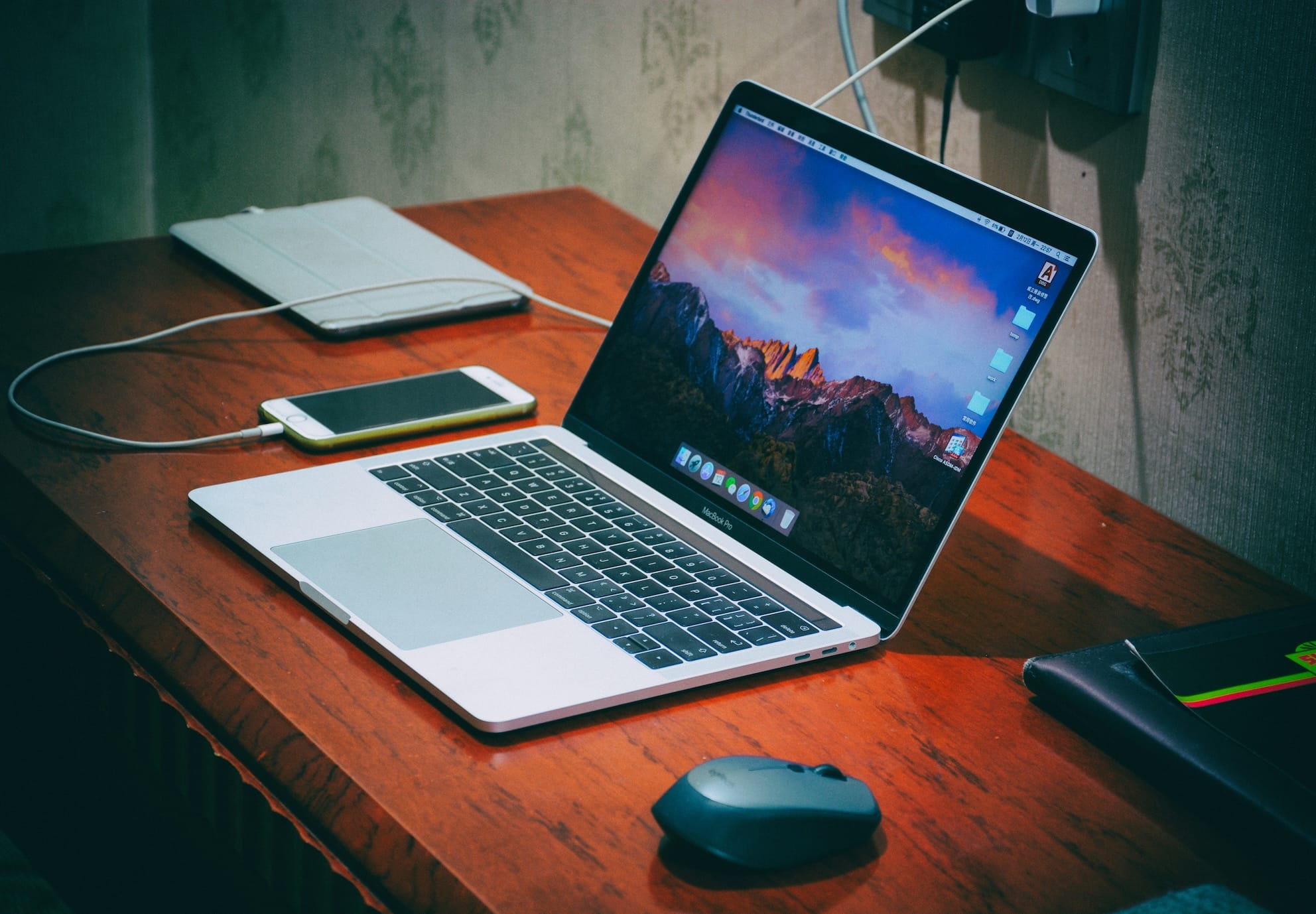Can an iPad Replace a Laptop? A Complete Professional Comparison
The iPad Pro with M-series chips delivers strong performance, portability, and smooth app integration. However, software limitations prevent it from fully matching a traditional laptop in demanding professional tasks, making it more of a complementary device than a complete replacement.

TL;DR - While Apple’s iPad Pro with M-series chips is powerful enough for many tasks, it still can’t fully replace a laptop for professionals like designers, video editors, music producers, or developers due to software and file limitations. However, for students and casual users, it’s a capable standalone device. The best experience comes from pairing an iPad with a MacBook combining portability, touchscreen creativity, and full desktop performance through features like Universal Control, Sidecar, and iCloud.
Introduction
With the increasing power of Apple's iPads, particularly the iPad Pro with M-series chips, many users wonder whether an iPad can fully replace a traditional laptop. Thanks to its portability, touchscreen capabilities, Apple Pencil support, and optimized software ecosystem, the iPad has become a compelling device for various professionals. However, its ability to completely replace a laptop depends on workflow needs, software constraints, and hardware limitations.
This article examines how an iPad fares as a laptop alternative across multiple professions, detailing potential workarounds and best practices. Additionally, we'll explore how an iPad, when paired with a MacBook, can create a seamless workflow within Apple's ecosystem.
Can Professionals Use an iPad as Their Primary Device?
To determine whether an iPad can replace a laptop, we must consider various professions and how they utilize computing devices.
1. Graphic Designers
For graphic designers, an iPad offers unmatched flexibility with its touchscreen and Apple Pencil support. Apps like Procreate, Adobe Fresco, and Affinity Designer provide advanced drawing and vector-based design capabilities. However, there are a few limitations:
- Missing Full Adobe Suite: While Adobe Photoshop and Illustrator are available on iPad, they lack certain features found in their desktop counterparts.
- File Management Issues: The absence of a conventional macOS-like file system can make organizing and transferring large project files challenging.
Designers who prioritise illustration and mobile workflows will find an iPad suitable. However, for complex graphic design projects, an iPad may be best used alongside a MacBook rather than replacing it entirely.
2. Video Editors
Apple has optimised iPadOS for video editing with apps like LumaFusion and the iPad version of Final Cut Pro. With M-series chips, iPads now support 4K and even ProRes editing. However, there are some drawbacks:
- Limited External Storage Compatibility: Unlike laptops, iPads lack broad external SSD support, limiting workflow flexibility.
- Restricted Plugin Support: MacOS-based Final Cut Pro and Adobe Premiere Pro offer deeper plugin integration that iPadOS currently lacks.
For quick edits, motion graphics, and simple video projects, an iPad can function well. Yet, for large-scale commercial editing, a MacBook remains necessary.
3. Music Producers
Music producers rely on Digital Audio Workstations (DAWs) for composing, mixing, and mastering tracks. Apps like GarageBand and Cubasis offer good functionality, but they are no match for Logic Pro X, Ableton Live, or FL Studio on macOS. Drawbacks include:
- Limited Plugin Support: VST plugins, widely used in professional music production, are absent on iPad versions of DAWs.
- Fewer Audio Interface Connections: The iPad lacks extensive I/O options for multiple instruments and microphones.
Musicians can use an iPad as a portable idea-capturing device but will still need a MacBook for full-fledged production workflows.
4. Coders and Developers
While an iPad supports coding platforms like Pythonista, Swift Playgrounds, and Juno, it does not provide a full-fledged development environment like a laptop. The key challenges include:
- Limited IDE Support: Professional developers require Visual Studio Code, Xcode, and JetBrains software, which are absent on iPadOS.
- Restricted Terminal Access: The iPad lacks full command-line capabilities compared to macOS or Windows laptops.
While an iPad works for writing code in basic languages like Python and Swift, software engineers and web developers will struggle to use an iPad as their sole machine.
5. Casual Users
For students, office workers, or everyday users who primarily browse the web, edit documents, attend video calls, and use social media, an iPad can effectively replace a laptop. Features like:
- Apple’s Magic Keyboard
- Cloud-based apps like Google Docs, Microsoft Word, and Notion
- Excellent battery life
make the iPad a great alternative to traditional laptops.
How to Make an iPad Work Without a Laptop
While an iPad may have limitations, here are strategies to maximize its productivity potential:
- Use Cloud-Based Tools: Google Drive, iCloud, and Dropbox help overcome file management constraints.
- Invest in Accessories: Apple's Magic Keyboard, Apple Pencil, and external storage can enhance usability.
- Utilize Split Screen & Stage Manager: These multitasking features make working with multiple apps easier.

iPad And MacBook Ecosystem
The iPad and MacBook work together within Apple's ecosystem, creating a seamless and integrated workflow experience. Instead of replacing one another, they complement each other by offering unique functionalities. This synergy is driven by macOS, iPadOS, and Apple's Continuity features, making transitions between devices effortless.
Key Features of the iPad and MacBook Ecosystem
1. Universal Control
- Allows users to control multiple Apple devices like MacBook, iPad, even iMac using a single keyboard, trackpad, or mouse.
- You can move your cursor between a MacBook and an iPad, drag files between them, and interact seamlessly.
2. Sidecar: iPad as a Second Display
- Turns an iPad into an extension of your Mac’s screen, ideal for multitasking, video editing, and coding.
- Works wirelessly, meaning you can use an iPad as a secondary monitor without external cables.
3. AirDrop for Instant File Transfers
- No need for flash drives as AirDrop allows instant transfer of files between iPad and MacBook, including documents, images, and videos.
- Faster and more secure than sending files via cloud services.
4. Handoff for Seamless Task Switching
- Lets you start a task on one device and continue it on another.
- Example: Begin typing an email on an iPad and finish it on a MacBook without manual saving.
5. iCloud Sync for Unified Storage
- Keeps files, photos, and documents synced between MacBook and iPad.
- Eliminates manual transfers as everything is available across devices.
6. Apple Notes & Freeform for Cross-Device Brainstorming
- Take notes on Apple Notes or Freeform and access them instantly on both devices.
- Excellent for students, designers, and professionals who need real-time updates.
7. Shared Clipboard
- Copy text, images, or links on one device and paste them onto another.
- Ideal for writers, researchers, and content creators switching between iPad and MacBook.
Why the iPad And MacBook Combo is Powerful
While an iPad offers touchscreen flexibility and portability, a MacBook provides full desktop-class software support. Together, they create an optimized workflow:
- Creative Professionals: Draw on an iPad and edit on a MacBook using Adobe or Affinity apps.
- Video Editors: Use the iPad for quick edits and the MacBook for full-scale productions.
- Students & Office Workers: Take notes on the iPad, draft documents on a MacBook, and access everything via iCloud.
Instead of replacing one another, an iPad and MacBook working together make for the perfect productivity duo
The Conclusion
The question of whether an iPad can replace a laptop depends entirely on the user's workflow and professional needs. While Apple's iPads, particularly the iPad Pro with M-series chips, offer impressive processing power, portability, and seamless app integration, they still come with software limitations that prevent them from fully replicating traditional laptop experiences in high-demand tasks.
For casual users, students, and light professionals, an iPad can serve as an effective laptop replacement, offering a simplified interface with cloud-based tools, Apple Pencil support, and accessories like the Magic Keyboard. However, for graphic designers, video editors, music producers, and coders, an iPad functions best as a companion device rather than a primary workstation due to missing advanced software support, limited file management, and restricted external connectivity options.
That said, pairing an iPad with a MacBook creates an optimized Apple ecosystem, where Universal Control, Sidecar, Handoff, Air Drop, and iCloud synchronization bridge the gap between mobile flexibility and professional-grade computing. Rather than viewing an iPad as a direct laptop replacement, many users can maximize productivity by leveraging both devices together, achieving seamless workflows across creative, technical, and everyday tasks.
Ultimately, the iPad vs. laptop debate isn’t about choosing one over the other it’s about finding the right balance for efficiency, mobility, and performance in an interconnected digital environment.




